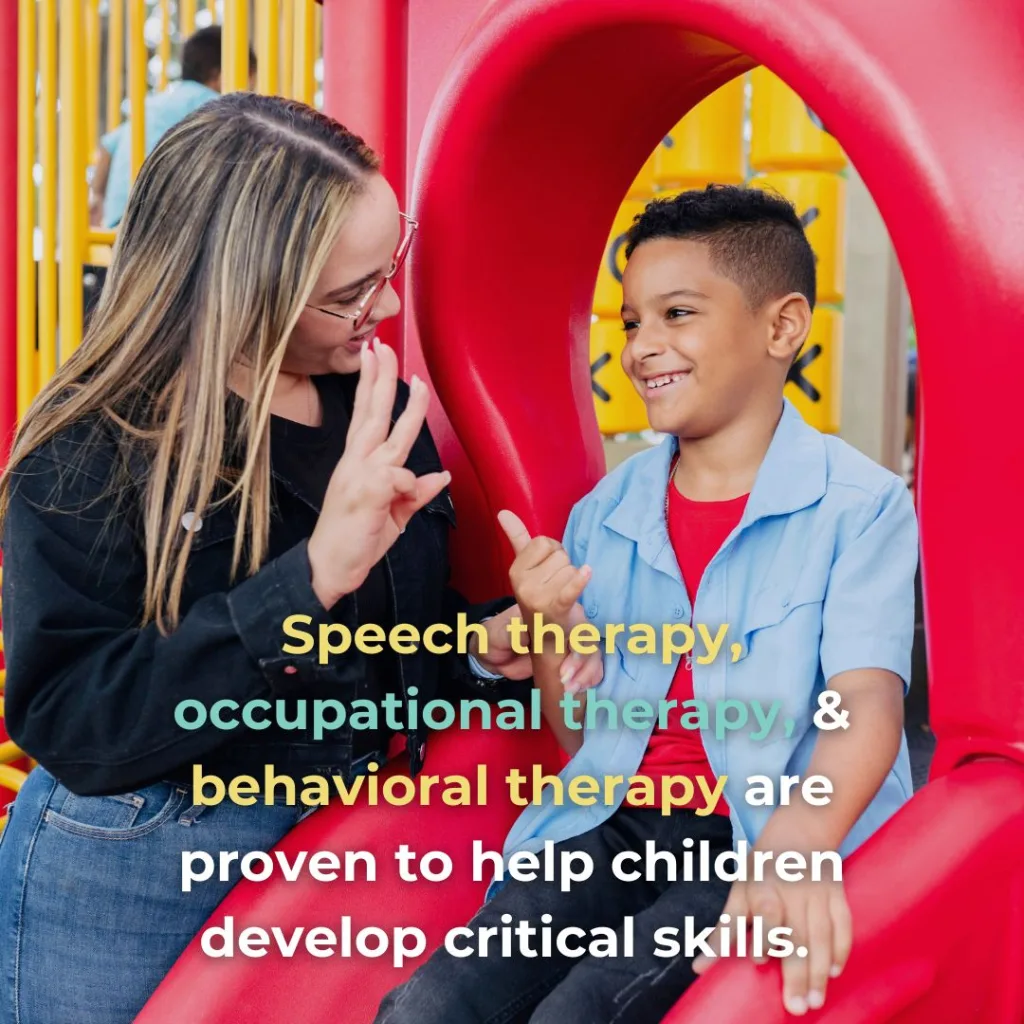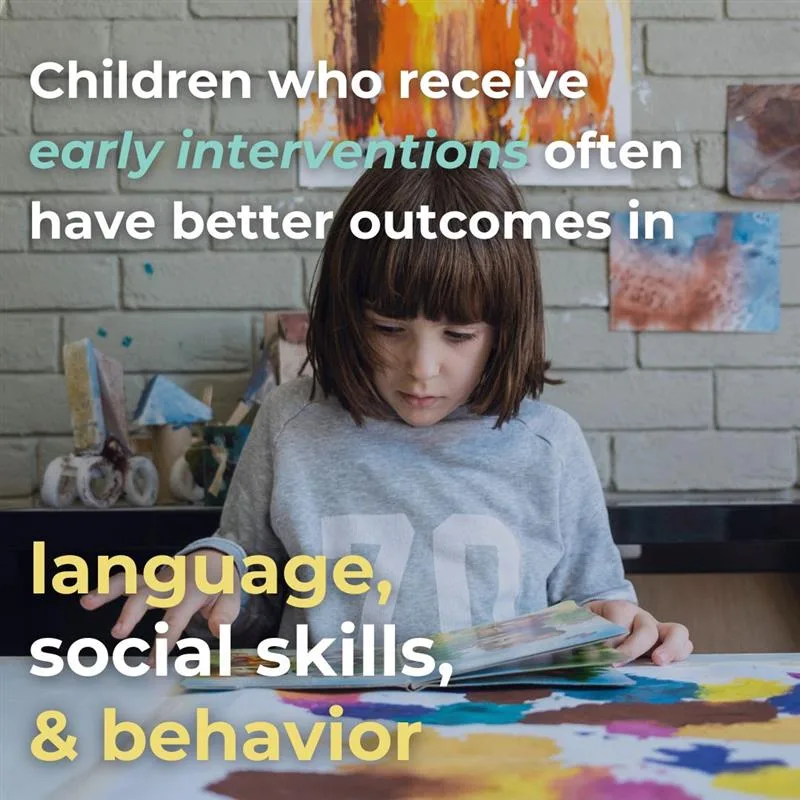Autism Spectrum Disorder (ASD) is a developmental condition that affects how individuals communicate, interact socially, and process the world around them. It is referred to as a “spectrum” because the symptoms and their severity can vary widely among individuals. Early identification of ASD is crucial, as it allows for timely interventions that can significantly enhance a child’s developmental outcomes and quality of life.
Recognizing the early signs of autism can empower families to take proactive steps toward diagnosis and support. These signs often emerge in infancy or early childhood, making it essential for parents and caregivers to stay informed.
According to the CDC, 1 in 36 children are diagnosed with autism, highlighting the need for awareness and early action.
If you’re seeking compassionate, professional support for your child’s development, PsychPlus is here to help. Explore our resources and connect with experienced professionals dedicated to guiding families through every step of the journey.
Autism Spectrum Disorder (ASD): A Closer Look
Autism Spectrum Disorder (ASD) is a neurodevelopmental condition characterized by differences in communication, social interaction, and behavior. Individuals with ASD may experience challenges in these areas to varying degrees, making autism a highly individualized condition.
The term “spectrum” reflects the broad range of presentations and severities associated with autism. While some individuals may exhibit noticeable symptoms such as delayed speech, repetitive behaviors, or difficulty with eye contact, others may have milder signs that are harder to detect, such as subtle social communication difficulties or sensory sensitivities.
Autism is not a “one-size-fits-all” condition. Each person with ASD has a unique combination of strengths and challenges, making their journey distinct. For example, some individuals may excel in specific areas like mathematics or art, while others might need more support in daily activities or social settings.
Understanding that autism exists on a spectrum helps foster acceptance and ensures that interventions and support strategies are tailored to the individual’s specific needs. By recognizing this diversity, we can better appreciate the unique perspectives and abilities of individuals with autism.
The Importance of Recognizing Early Autism Signs
Early detection of Autism Spectrum Disorder (ASD) can make a world of difference in a child’s development and overall well-being. Identifying the early signs of autism enables families to seek professional evaluations and begin interventions as soon as possible, setting the stage for better long-term outcomes.
One of the most significant benefits of early diagnosis is the ability to access early intervention services, such as speech therapy, occupational therapy, and behavioral therapy. These tailored support strategies are designed to address the unique needs of each child, helping them develop essential communication, social, and adaptive skills.
Research shows that children who receive early interventions often have better outcomes in language, social skills, and behavior.
Timely support can also reduce frustration for both the child and their caregivers, creating a more positive and nurturing environment for growth. Early detection empowers families to build a strong foundation for their child’s future by understanding and supporting their needs from the outset.
If you’re concerned about your child’s development, don’t wait. Seeking help is a sign of strength, not weakness. Book an Appointment today to connect with compassionate professionals who can guide you through the next steps.
Identifying the First Clues: Early Signs of Autism
Recognizing the early signs of autism can help parents and caregivers take timely steps toward evaluation and support. These signs often manifest in the way a child interacts, communicates, and behaves. While they may vary greatly from one child to another, understanding these clues can make a significant difference.
Social and Communication Red Flags
- Limited eye contact or lack of response to their name: Children with autism may avoid eye contact or fail to respond when called, even if their hearing is normal.
- Difficulty with shared attention: For example, they may struggle to follow where someone is pointing or directing their attention.
- Myth: “All children with autism don’t express emotions.”
- Clarification: Many children with autism do express emotions, but they may show them differently. For instance, their expressions of happiness or frustration might be more subtle or unique than those of neurotypical children.
Behavioral Indicators
- Repetitive behaviors: Actions like hand flapping, rocking, or spinning are common self-soothing or repetitive movements in children with autism.
- Intense focus on certain objects or routines: Children may display a strong attachment to specific items or become distressed if their routines are disrupted.
- Sensory sensitivities: They might avoid certain textures, cover their ears in response to loud sounds, or have a heightened reaction to smells or lights.
- Fact: “Some children show signs as early as 12 months, though symptoms can vary widely.”
Developmental Delays
- Delays in speech and language development: A child may have fewer words than expected for their age or may not use gestures like pointing or waving.
- Unusual patterns of play: Instead of engaging in imaginative play, such as pretending a toy car is driving, children may line up objects or focus on specific details like spinning wheels.
By observing these early signs, families can take proactive steps to seek evaluations and interventions that support their child’s development.
Common Myths vs. Facts About Autism Symptoms
When it comes to autism, misinformation can lead to stigma and misunderstanding. Addressing common myths with facts is crucial to fostering awareness and acceptance.
Myth: “Autism can be ‘outgrown.'”
- Fact: Autism is a lifelong condition. While individuals do not “outgrow” autism, many can develop skills and strategies to navigate challenges. With appropriate support and interventions, autistic individuals can improve their communication, social abilities, and overall quality of life.
Myth: “Vaccines cause autism.”
- Fact: Research has consistently debunked the claim that vaccines cause autism. Major studies involving hundreds of thousands of children worldwide have found no evidence of a connection between vaccines and autism. This myth continues to persist but is not supported by science.
Myth: “Autistic children don’t form relationships.”
- Fact: Autistic children may form relationships differently, but they are fully capable of building bonds and showing affection. They might express love and connection in ways that are unique to them, such as through specific actions, interests, or gestures rather than traditional expressions of emotion.
Breaking these myths is an important step toward understanding autism and supporting individuals on the spectrum with compassion and inclusivity.

What to Do if You Suspect Autism in Your Child
If you notice early signs of autism in your child, taking prompt action can pave the way for timely support and better developmental outcomes. Here are the steps to guide you through the process.
Consulting a Pediatrician
Your child’s pediatrician is often the first point of contact when concerns arise.
- During routine checkups, share your observations about behaviors, communication, or developmental milestones.
- Pediatricians can conduct initial screenings and determine whether a more detailed evaluation is necessary.
Open communication with your doctor ensures that concerns are addressed early, reducing delays in accessing care.
Seeking an Autism Evaluation
If your pediatrician agrees that further assessment is needed, they may recommend a specialized autism evaluation.
- An autism assessment typically involves developmental questionnaires, behavioral observations, and input from parents and caregivers.
- A team of specialists, including psychologists, speech therapists, and developmental pediatricians, may be involved to provide a comprehensive diagnosis.
These evaluations are crucial for understanding your child’s unique strengths and challenges.
Accessing Early Intervention Services
Once a diagnosis is made (or even if signs are strongly suspected), early intervention services can begin.
- Speech therapy, occupational therapy, and behavioral therapy are proven to help children develop critical skills.
- Many families can access free or subsidized programs through state-funded early intervention services or non-profit organizations.
Early interventions not only enhance a child’s developmental progress but also equip parents with tools to better support their child’s needs.
Start by consulting your pediatrician or family doctor today and requesting a referral if needed. Taking this step can help your child access the care they deserve and set the foundation for a brighter future.

Practical Tips for Parents and Caregivers
Supporting children with autism early on can significantly improve their developmental journey. As a parent or caregiver, small, thoughtful adjustments in daily life can make a big difference in helping your child thrive.
Encourage Social Interactions in Comfortable Environments
- Create opportunities for social interactions in environments where your child feels safe and at ease.
- Playdates with familiar peers or structured activities can help build social skills gradually without overwhelming them.
Support Sensory Needs with Adaptations
- Pay attention to your child’s sensory preferences and sensitivities. For example:
- Provide noise-canceling headphones to reduce discomfort in noisy environments.
- Use soft, tag-free clothing or avoid textures they find uncomfortable.
- Respect their sensory boundaries while introducing gradual exposure to new experiences.
Foster Communication with Simple Language and Gestures
- Use clear, simple language to help your child understand and communicate.
- Pair words with gestures, like pointing or nodding, to enhance understanding.
- Consider using visual aids, like picture cards or apps, to support communication.
Discover Creative Approaches
Engaging with tools like therapy dolls can offer unique ways to encourage emotional understanding and connection in children. Explore ideas like these in our blog: How to Use Therapy Dolls for Depression in Children: 10 Effective Strategies. While focused on depression, many of the techniques can inspire creative ways to support emotional expression in children with autism.
With patience and tailored strategies, you can create an environment where your child feels empowered to grow and connect in their own unique way.
Moving Forward: Understanding and Embracing Autism Early On
Recognizing the early signs of autism is a crucial step in helping your child receive the support they need. The sooner autism is identified, the sooner interventions can begin, making a world of difference in your child’s development. Trusting your instincts as a parent and seeking professional guidance when you notice potential signs is not only important but empowering.
Early intervention can significantly improve outcomes in language development, social skills, and behavior. By fostering an accepting and supportive environment, we can help children with autism thrive in their own unique ways.
Remember, embracing your child’s individuality and providing the right resources can lead to positive growth and greater opportunities for connection.
For more helpful tips and resources on mental health and supporting children, visit the PsychPlus Blog. Our content is designed to offer valuable information and guidance for families navigating these important steps.


